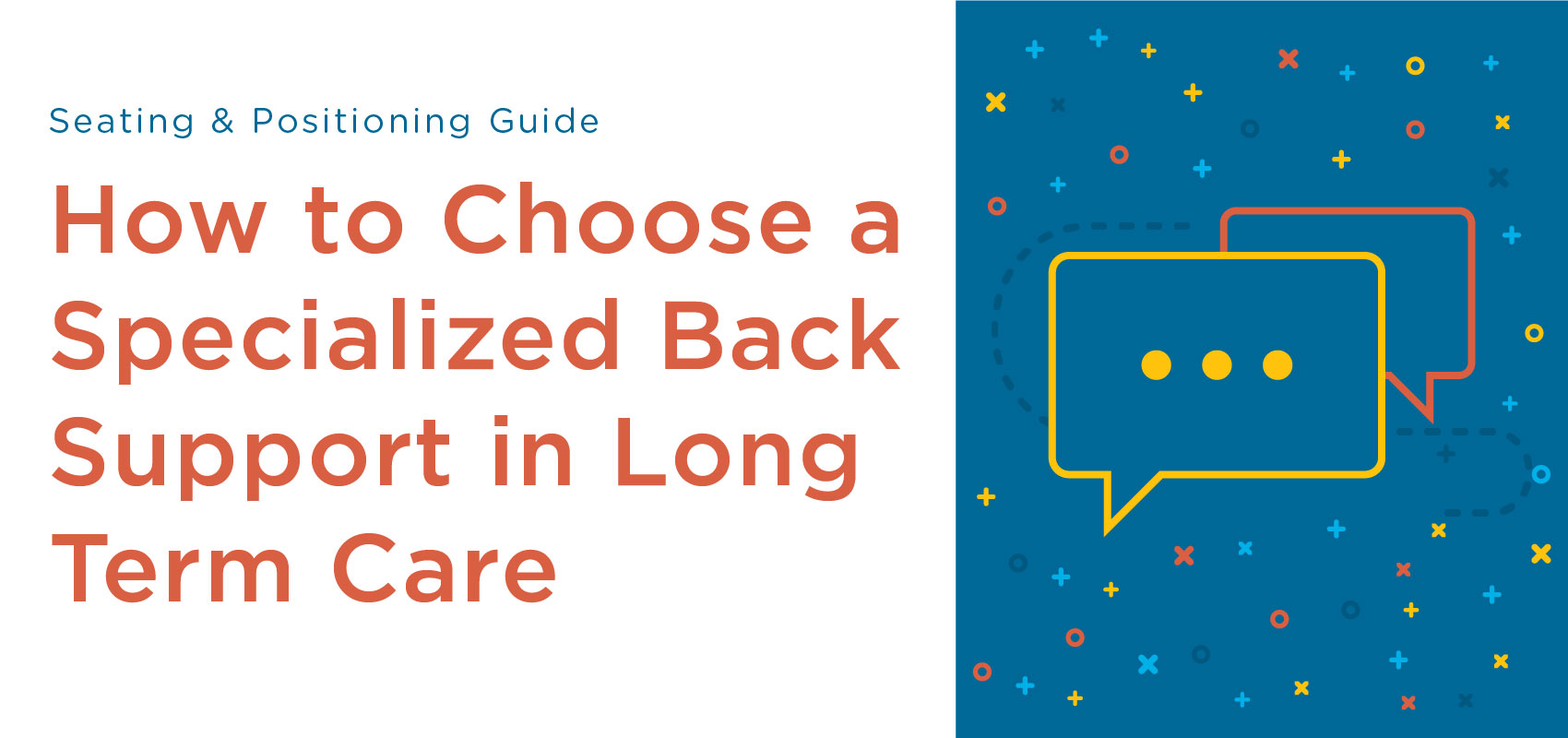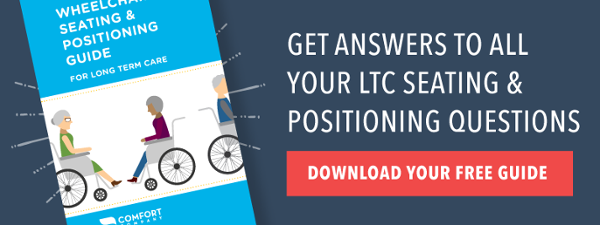Part 19 in our LTC Seating & Positioning series intended to shed some light on the mystery of seating and positioning in the LTC setting. See the rest of the blog posts in the following links: Part 1 (Best Wheelchair Options in LTC), Part 2 (Posture Problems), Part 3 (Posterior Pelvic Tilt), Part 4 (Anterior Pelvic Tilt), Part 5 (Pelvic Obliquity), Part 6 (Pelvic Rotation), Part 7 (Fixed vs Flexible Postural Abnormalities), Part 8 (Windswept Posture), Part 9 (Incorrect Seating Dimensions), Part 10 (Issues with Current Wheelchair System: Seat-to-Floor-Height), Part 11 (Issues with Current Wheelchair System: Back Support), Part 12 (Issues with Current Wheelchair System: Legrest), Part 13 (Issues with Current Wheelchair System: Armrest), Part 14 (Issues with Current Wheelchair System: Head Support), Part 15 (Why is wheelchair seating & positioning important for our residents?), Part 16 (How to Measure: Step of a Seating Eval), Part 17 (How to Measure: Specific Measurements), Part 18 (How to Choose a Cushion in Long Term Care)
Last time we looked at how to choose the appropriate wheelchair cushion. The goal of a cushion is to provide optimal pressure distribution to minimize peak pressures, and to support the pelvis for optimal stability. The goals in choosing a specialized back support are similar in that you want to provide even pressure distribution and ensure optimal stability.
Specialized back supports can be molded to an abnormal curvature of the spine seen with all pelvic deformities. Here is a closer look at the abnormal curvatures of the spine that you will be able to envelop for increased pelvic alignment and stability, pressure redistribution, and comfort:
| Kyphosis | Scoliosis |
 |
 |
| Lumbar Lordosis | Spinal Rotation |
 |
 |
But how do you know whether your resident really needs a specialized back support? Ask yourself the following questions:
- Is your resident immobile?
- Does your resident have a postural abnormality that affects pelvic and trunk stability and alignment?
- Does your resident require assistance to sit unsupported?
- Does your resident complain of pain while sitting in the wheelchair system?
If you answered yes to any of these questions, then without a doubt, replace the sling back with a specialized back support.
How do I choose the right Specialized Back Support?
Back supports are broken into the following categories:
- Standard
- Moderate Support
- Maximum Support
Much like cushion categories, there are certain criteria that assist a therapist in choosing the appropriate back support category that will meet the resident's needs. This criteria includes the amount of assistance needed for repositioning, ability to maintain an optimal midline posture, and the amount of pressure the wheelchair back support must withstand. Please refer to the chart below for a more detailed algorithm to help you choose what back support category fits your resident's needs.
| Standard | Moderate Support | Maximum Support |
| Independently maintains trunk in midline while sitting unsupported | Min to mod assist to maintain trunk in midline while sitting unsupported | Max to dep assist to maintain trunk in midline while sitting unsupported |
| Active resident; with or without a fixed or flexible abnormal curvature of the spine | Resident with activity limitations; with or without a fixed or flexible abnormal curvature of the spine | Inactive resident; with or without a fixed or flexible abnormal curvature of the spine |
| Can independently reposition and perform pressure relief | Requires min to mod assist to reposition and perform pressure relief | Requires max to dep assist to reposition and perform pressure relief |
| Intact skin and/or occasional redness along the spinous process | Persistent redness or an open area along the spinous process | Persistent redness or an open area along the spinous process |
| Light leaner that may use a foam lateral trunk support to promote upright, midline posture | Moderate leaner that would benefit from a mounted lateral trunk support to promote upright, midline posture | Heavy leaner that requires a mounted lateral trunk support to promote upright, midline posture |
| Complaint of back pain while sitting in the wheelchair | Complaint of back pain while sitting in the wheelchair | Complaint of back pain while sitting in the wheelchair |
| Awake and alert | Decreased alertness, sleeps occasionally in chair | Decreased alertness, sleeps often in chair |
| Good head control, head position does not affect trunk posture or vice versa | May or may not require a head support to maintain optimal head, neck, and trunk alignment | Requires a head support to maintain optimal head, neck, and trunk alignment |
| Captures some abnormal curvature of the spine with a less agressive system to increase stability and pressure redistribution | More stable and durable back support that allows for better surface contact through adjustability of seat-to-back angle and contours to most postural abnormalities, leading to stability and pressure redistribution | Neurological disorders |
| Progressive disorders | ||
| Most stable and durable back support that allows for the most aggressive envelopment to capture any abnormal curvature, leading to optimal stability and pressure redistribution |
Advantages of using a Specialized Back Support
No matter what category you choose, the right back support is an essential part of a proper wheelchair seating system. Here are some of the important advantages of a specialized back support:
- Captures curvature whether normal or abnormal and increases contact with both the back support and seat surface for maximum stabilization
- Envelops the spine to maximize pressure redistribution and minimize peak pressure on the spinous process
- Decreases pain
- Works hand in hand with the cushion to lock in the pelvis for maximum stabilization
- Helps reduce the progression of an abnormal spinal posture
- Increases seat depth
The typical sling back that comes on all models of chairs easily hammock and lose their shape, no longer stabilizing the trunk. Be familiar with back supports on the market and how they can help to achieve your resident's goals.
Check in with us next time to learn about the elevating leg rest myth. We will shed some light on appropriate lower extremity positioning in a wheelchair.

Ana Endsjo, MOTR/L, CLT
Clinical Education Manager LTC Division
Ana Endsjo has worked as an occupational therapist since 2001 in a variety of treatment settings. She has mainly worked with the geriatric population, dedicated to the betterment of the treatment of the elderly in LTC centers. Her focus has been on seating and positioning and contracture management of the nursing home resident. With this experience, her hope is to guide other therapists, rehab directors, nurses, and administrators through educational guides, blogs, webinars, and live courses in her role as Clinical Education Manager for the long term care division.

